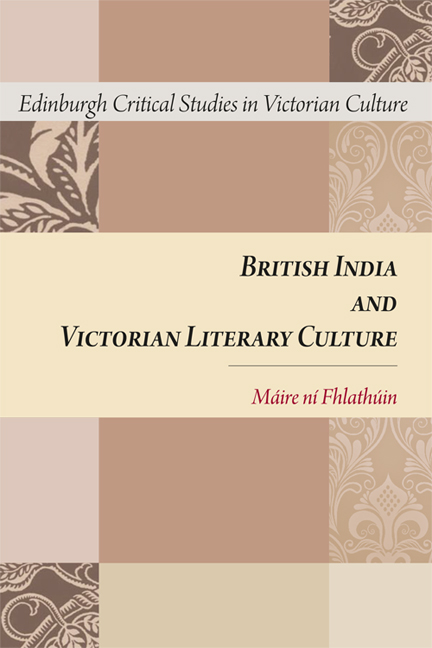Book contents
- Frontmatter
- Contents
- Series Editor's Preface
- Acknowledgements
- A Note on Terms
- Introduction
- Part I Experiences of India
- Part II Representations of India
- 4 European Nationalism and British India
- 5 Romantic Heroes and Colonial Bandits
- 6 Imagining India through Annals and Antiquities of Rajast'han
- 7 Transformations of India after the Indian Mutiny
- Afterword: Reading India
- Bibliography
- Index
7 - Transformations of India after the Indian Mutiny
from Part II - Representations of India
Published online by Cambridge University Press: 05 August 2016
- Frontmatter
- Contents
- Series Editor's Preface
- Acknowledgements
- A Note on Terms
- Introduction
- Part I Experiences of India
- Part II Representations of India
- 4 European Nationalism and British India
- 5 Romantic Heroes and Colonial Bandits
- 6 Imagining India through Annals and Antiquities of Rajast'han
- 7 Transformations of India after the Indian Mutiny
- Afterword: Reading India
- Bibliography
- Index
Summary
The Mutiny of 1857 was a watershed in the history of nineteenthcentury India, changing how the British in India thought of India, ‘home’ and their own position in relation to both. This chapter explores the reorientation of British representations of India, first in response to the events of the Mutiny, and later in response to Indian aspirations to self- determination, manifested particularly in the growth of Bengali nationalism towards the end of the century. It also returns to the central themes of the two previous chapters, focusing on the representation of Indian masculine criminality and feminine agency in the literature of the Mutiny, and the engagement with representations of Rajput nationalism in post- Mutiny appropriations of Rajasthan by British writers.
In some respects, the literature of the Mutiny takes up and consolidates tropes and themes already firmly established in texts written in the first half of the nineteenth century. Taylor's Seeta (1872), for example, recalls some of the themes of the author's first and best- known work, Confessions of a Thug (1839). These include the representation of a bandit protagonist and his Indian woman victim, both now viewed through the lens of the Mutiny of 1857 rather than the thug campaigns of the 1830s. Seeta, however, is a far less ambiguous novel than Confessions, as it reprises, and in doing so resolves, several of the tensions of the earlier work. The ambivalent dual representation of Ameer Ali, the hero of Confessions, as both monstrous criminal and sympathetic interlocutor becomes in Seeta a one- dimensional portrait of the bandit Azráel Pandé as the villain. The novels are separated by thirty- odd years, but also and most importantly by the action of the Mutiny, which transforms the relationship of the British with India. In effect, the category of Indian hero (male or female) is no longer available to British writers.
It is through the figure of Azráel Pandé that Seeta develops a link between the thugs and dacoits of the 1830s and 1840s, and the rebels of 1857. The ritual which precedes his raid on the goldsmith's house, with its ceremonial accoutrements of the axe, the omens of vulture and jackal, and the invocation to Kali, establishes him and his associates as dacoits.
- Type
- Chapter
- Information
- British India and Victorian Literary Culture , pp. 154 - 184Publisher: Edinburgh University PressPrint publication year: 2015



